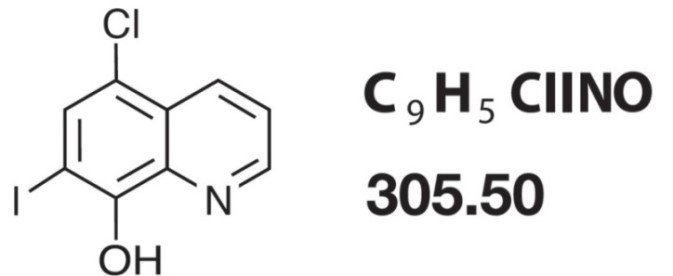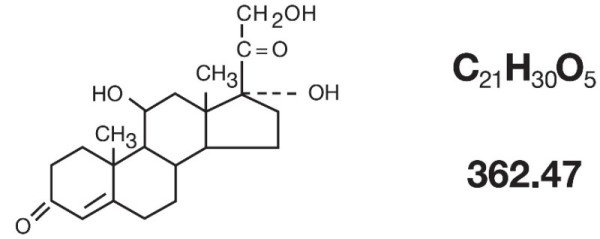Ala Quin Cream
Generic name:hydrocortisone and iodochlorhydroxyquin
Dosage form: cream
Drug class:Topical steroids with anti-infectives
Medically reviewed by Drugs.com. Last updated on Oct 22, 2021.
Disclaimer: This drug has not been found by FDA to be safe and effective, and this labeling has not been approved by FDA. For further information about unapproved drugs, click here.
On This Page
Rx only
For external use only.
Not for ophthalmic use.
Description
Iodochlorhydroxyquin (Clioquinol) is an antifungal agent and a member of a family of drugs called hydroxyquinolines. Chemically, Iodochlorhydroxyquin is 5-chloro-7-iodo-quinolin-8-ol. Its structural formula is:

The topical corticosteroids constitute a class of primarily synthetic steroids used as anti-inflammatory and antipruritic agents. Hydrocortisone is a member of this class. Chemically hydrocortisone is pregn-4-ene-3, 20-dione, 11, 17, 21-trihydroxy, (11β)-. Its structural formula is:

Each gram of ALA-QUIN contains 5 mg Hydrocortisone USP and 30 mg Iodochlorhydroxyquin USP in a cream base consisting of purified water, glycerin, cetyl alcohol, polysorbate 80, stearyl alcohol, sodium lauryl sulfate, cetyl palmitate and sorbic acid.
Ala Quin Cream - Clinical Pharmacology
Iodochlorhydroxyquin is a broad-spectrum antibacterial and antifungal. Its precise mechanism of action is unknown. Topical corticosteroids share anti-inflammatory, antipruritic and vasoconstrictive actions. The mechanism of anti-inflammatory activity of the topical corticosteroids is unclear. Various laboratory methods, including vasoconstrictor assays, are used to compare and predict potencies that a recognizable correlation exists between vasoconstrictor potency and therapeutic efficacy in man.
Pharmacokinetics
The extent of percutaneous absorption of topical corticosteroids is determined by many factors including the vehicle, the integrity of the epidermal barrier, and the use of occlusive dressings.
Topical corticosteroi..



